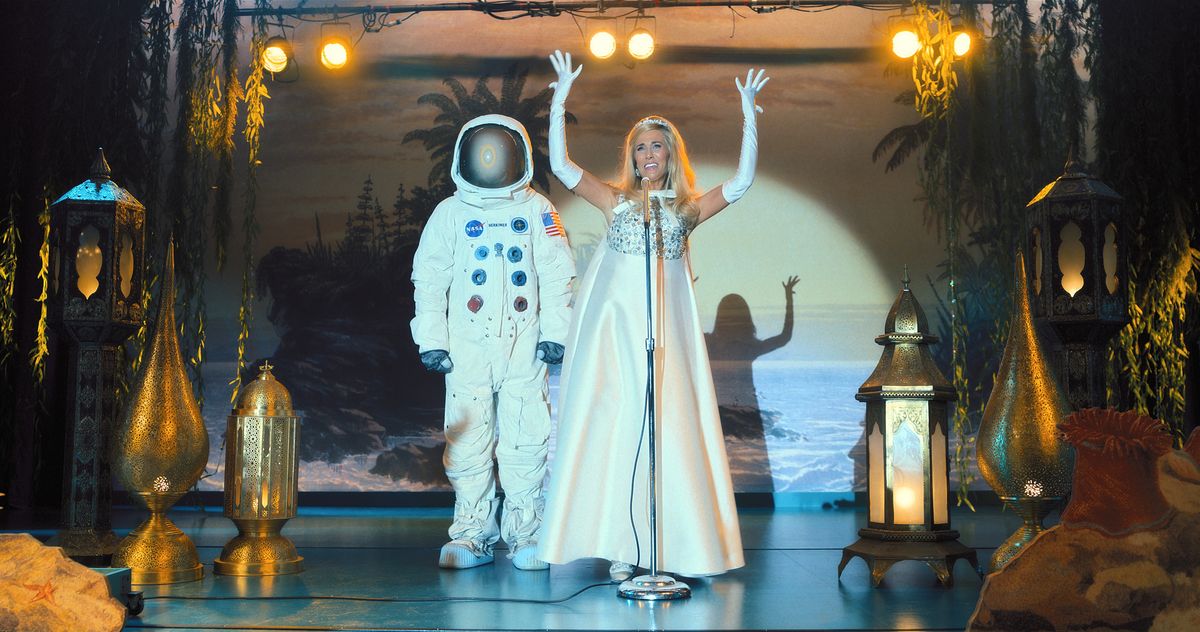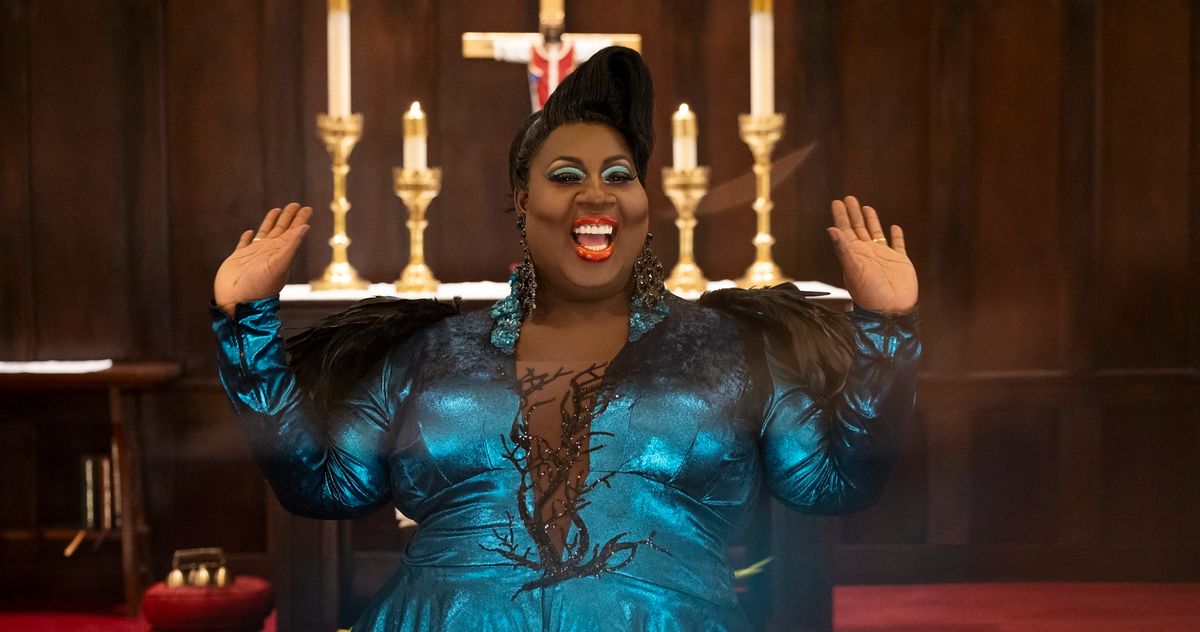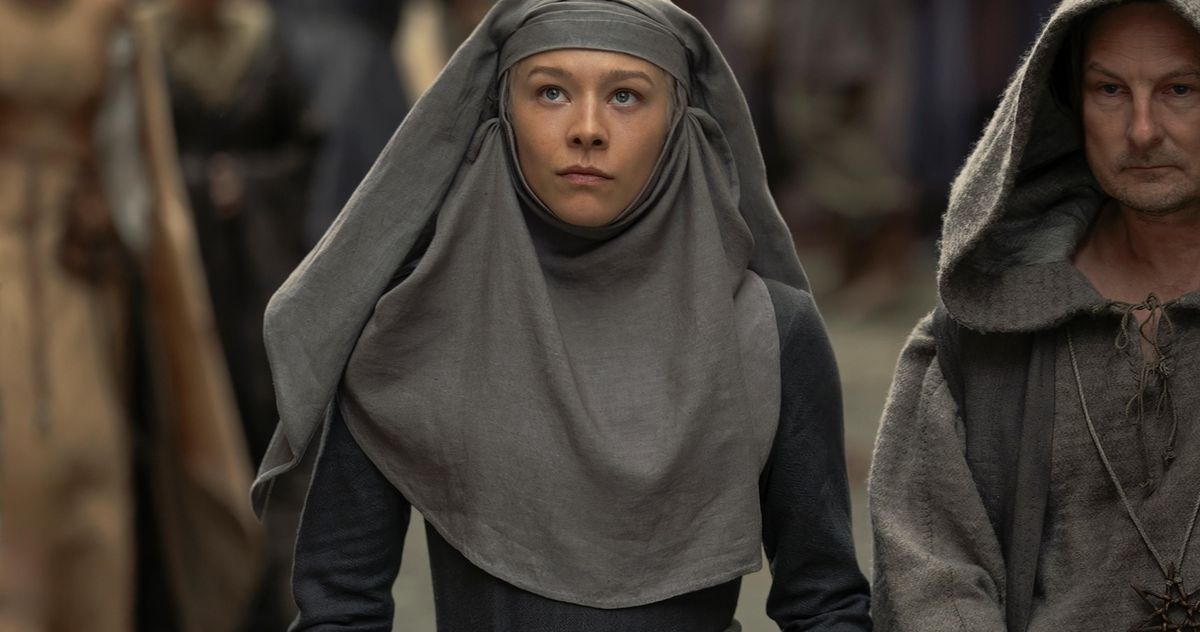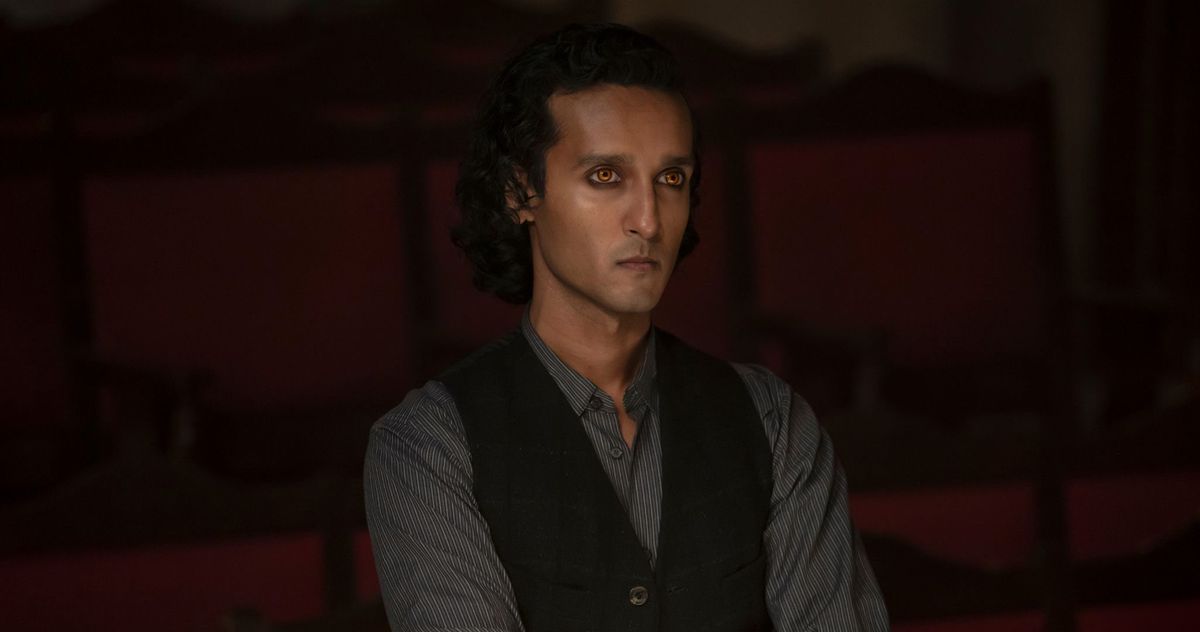Any period piece set between 1800 and 2000 that isn’t choked by cigarette haze is fundamentally compromised.
Photo: Apple TV+
Palm Royale wears its time period like a sweetheart-neckline cocktail dress. From sunglasses and boat shoes to headscarves, wallpaper, and large automobiles, it’s as good a job of material-historical re-creation as you’ll see on television. Every element has been researched, designed, and presented with the utmost care. When Kristen Wiig’s Maxine Dellacorte sits poolside reading the local society pages or Allison Janney’s Evelyn rocks a pair of sunglasses big and bold enough to get filched by Truman Capote, you feel as if you’re looking at a spread from an old magazine in a vintage store that’s come alive. But something’s missing. Something that should complete the panorama as perfectly as a splash of Angostura bitters in a Manhattan cocktail. Smoke.
Nobody smokes on Palm Royale, which is set in Florida in 1969. This is not right, artistically or historically. According to U.S. government statistics, a little less than half the adult population smoked in the 1960s, and you could do it just about anywhere — on airplanes, in movie theaters, in the obstetrics waiting rooms of hospitals. Until the 1970s, when TV advertising of cigarettes was banned, smoking was extremely common in movies and less common but far from rare on TV (except for crime dramas and talk shows, where everyone smoked like a chimney). I enjoy the heck out of Palm Royale, but half these characters should be smoking. All the time. In restaurants, in bars, in cars, on front stoops and back porches, behind the wheel of their cars.
And by smoking I don’t mean they should take one or two puffs, then stub it out. They should be exhaling roiling cumulus clouds of smoke during casual conversations, lighting up while watching Walter Cronkite and Johnny Carson, extinguishing cigarettes in bedside ashtrays before they go to sleep. If you catch a glimpse of their dreams, there should be smoking in them. Any period piece set between 1800 and 2000 that doesn’t at least occasionally show people smoking cigarettes, pipes, opium, marijuana, hash, or anything else you can light and inhale is a period piece that’s fundamentally compromised. The farther back in the timeline you go, the more the visuals of the piece should be choked with smoke; whether it’s in the foreground or background doesn’t matter.
Mad Men got this right. Righter than any period drama made for TV during the preceding two decades. Just in case you thought all the smoking was an endorsement, the show began with Madison Avenue advertising-wizard Don Draper, a prodigious smoker, pitching a cigarette ad campaign, and ended with a character who’d smoked through all seven seasons dying from lung cancer. The characters on Mad Men also drank casually — at home, at work, in bars — to a far greater extent than people do now. This is a separate but related discussion. Suffice to say that if you were alive for any part of history prior to the turn of the millennium, you know that people participated in self-destructive but visually interesting activities. To quote David Milch, whose work for Deadwood, NYPD Blue, and Hill Street Blues did not lack for depictions of smoking, drinking, and every other sort of vice, “There are times in life when intoxicants are not only permissible but necessary.”
I’ll be even blunter: Unless the year has a 2 in front of it, your frames had better have haze in them. Any film or TV program set in the Before Times that doesn’t show anywhere from a third to half the adult characters smoking is not actually committed to the fiction. And any platform that pressures storytellers to minimize or eliminate smoking from fiction is not merely square but an enemy of art. Again, if it’s set in period, in your mind the entire thing should smell faintly of tobacco.
Actors don’t smoke real cigarettes on set, by the way. They typically use prop cigarettes that are herbal, have no nicotine or additives, and are only lit when cameras are rolling, in much the same way that stuntpeople don’t run a motorcycle off a cliff until the director has called “Action.” I should also probably tell you here that I’m not interested in anyone’s opinion about whether discouraging smoking in film and TV results in a net social good, because I don’t believe that’s what scripted entertainment should be concerned with — primarily or even tangentially. Plus, people tend to be inconsistent, if not opportunistic, when deciding when and why to be outraged at art. If everyone genuinely believed that it should model only socially beneficial behavior, they’d also demand an end to characters lying, stealing, committing adultery and murder, and wearing white after Labor Day.
No, I’m mainly interested in the accuracy of smoking, and to a nearly equal extent, the way smoking adds to the look of scenes. Cinematographers have always loved what smoke does to light and shadow and the way it frames actors. The best of the smoking actors knew that cigarettes were sublime onscreen, treated them as a performance prop, and invested them with imagination. Humphrey Bogart had a hundred different ways to dangle a cigarette from his lips. Bette Davis was a jabber. Burt Lancaster drew in the air with his ember. In 1984’s Miami Vice — and one of the last great smoking shows on TV until Mad Men came along — Don Johnson’s undercover cop, Sonny Crockett, not only smoked filterless Lucky Strikes, he tore the filters off smokes that he bummed from other characters before lighting up.
NBC made Miami Vice go smoke-free starting in season three. It did the same with one of the only great 1990s smoking shows on broadcast TV, Homicide: Life on the Street, the first season of which had more smokers than the sidewalk in front of a strip club at closing time. The removal of Homicide’s haze was a buzzkill in more ways than one — the actors tied smoking styles to the characters’ personalities, and the directors made smoke part of the visual texture — but at least they wrung some comedy out of a bunch of hard-bitten detectives all quitting at once. There were a few other American series where recurring characters smoked (President Bartlet on The West Wing, the title character of Becker), but it was understood by the audience that it was evidence of a psychological defect (Bartlet only smoked when his resolve cracked under pressure; CBS made Becker quit smoking in season two, and he replaced that vice with one that was more acceptable to the network: sex addiction.)
You don’t see smoking depicted with realistic frequency even on current or recent period series like HBO’s The Gilded Age (late 1900s), Bridgerton (early 1800s), Daisy Jones & the Six (1970s), or Stranger Things (a 1980s story that let some of its major characters smoke until censorious viewers complained that it was about kids and watched by kids, at which point Netflix made everyone quit). The Crown, set in the 20th century, showed King George, a smoker, getting part of his lung removed, and commented on Margaret’s smoking, but was otherwise smoke-averse, at least in relation to what was actually happening in England during that time span. (One World War II aviator drama, Masters of the Air, however, got it right: The interiors were as murky as saunas. And, of course, there’s Tokyo Vice, a show set in 1999, notably not in the U.S., that appropriately drags like its ancestor.)
There is not enough cubic yardage of smoke in films, either. Chevalier (1800s), The Iron Claw (1980s), Air (1980s), The Boys in the Boat (1940s), Blackberry (1980s), and Ferrari (1950s) were period credible in other ways, but should have had air so thick that the characters could’ve backstroked through it. Recent period crime dramas like Blood for Dust (’90s) and Last Stop in Yuma County (’70s) have characters that smoke, but not enough of them. Jerry Seinfeld’s Unfrosted, set in 1963, doesn’t have any smoking at all, even from Jon Hamm’s Don Draper, who’d been brought back for a surprise cameo that got everything else about the character wrong including putting him in a suit that didn’t fit.
A few recent period films are properly wreathed, including Oppenheimer, Asteroid City, Licorice Pizza, and Saltburn, which is set in 2006, the beginning of the end of casually expressive, commonplace cigarette smoking in real life. It’s hardly a coordinated movement, though. I quit smoking and am glad I did, but every time I watch a piece of entertainment set more than two decades ago, I wish the entertainment industry hadn’t. Smoke added to the story and images. It made me feel like I was really there and it was all really happening, and that the piece was in good hands. One of which probably had a cigarette in it.















